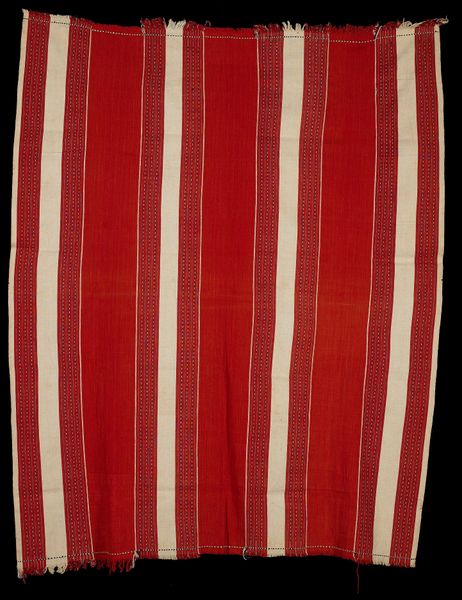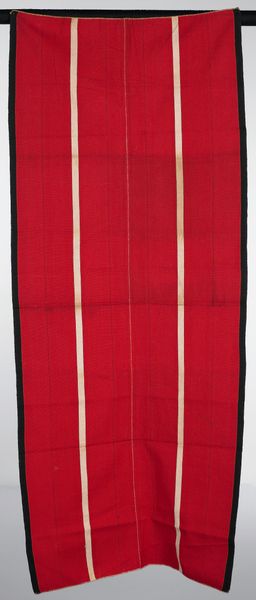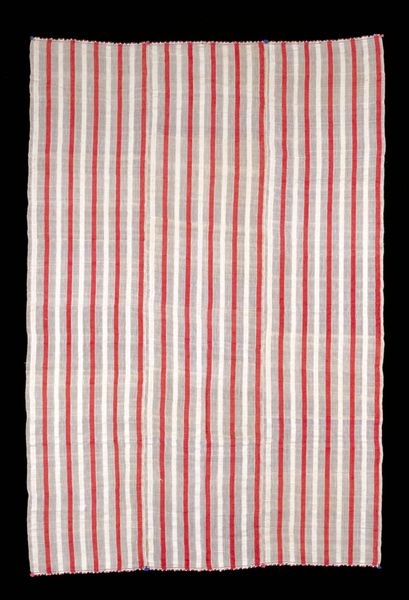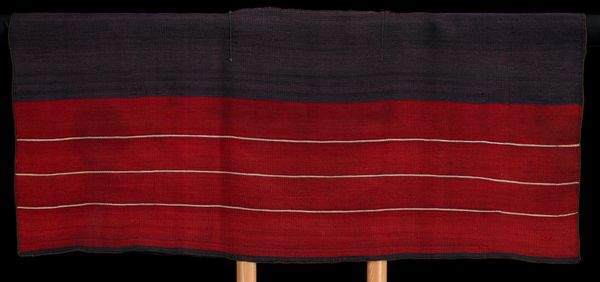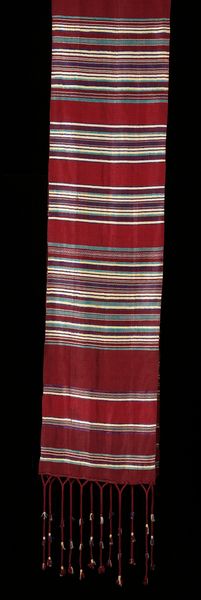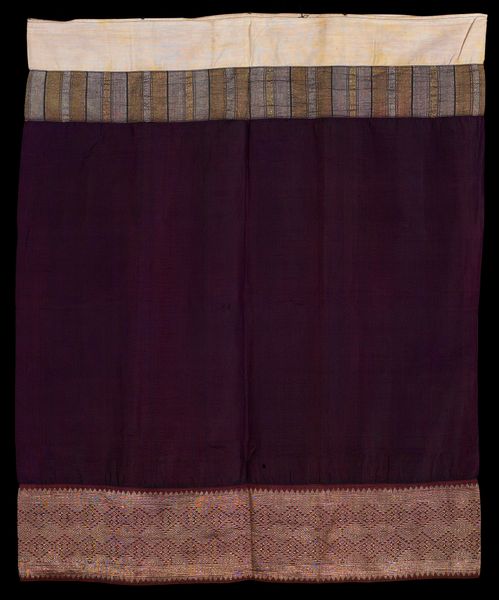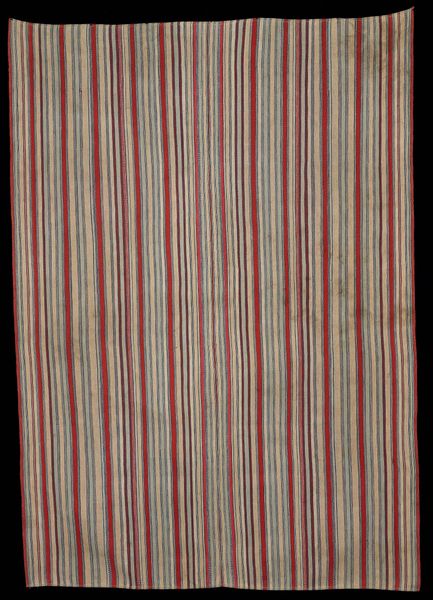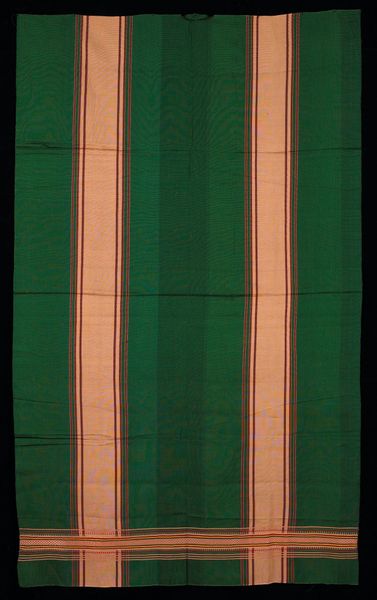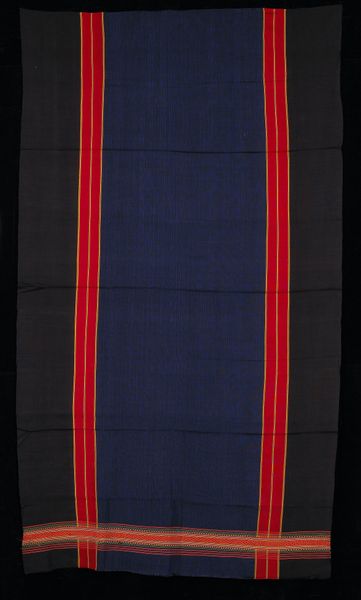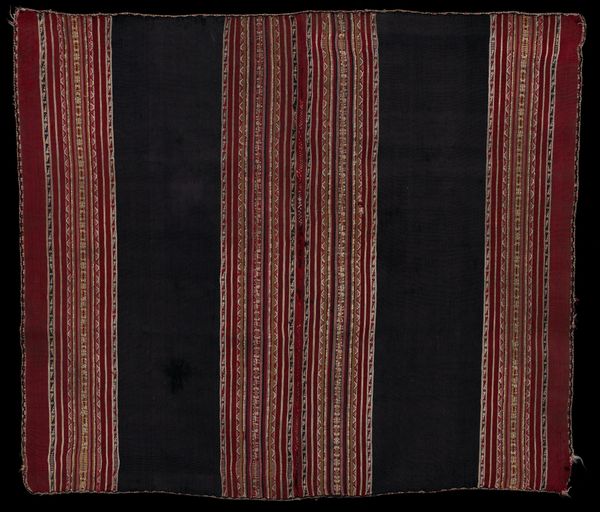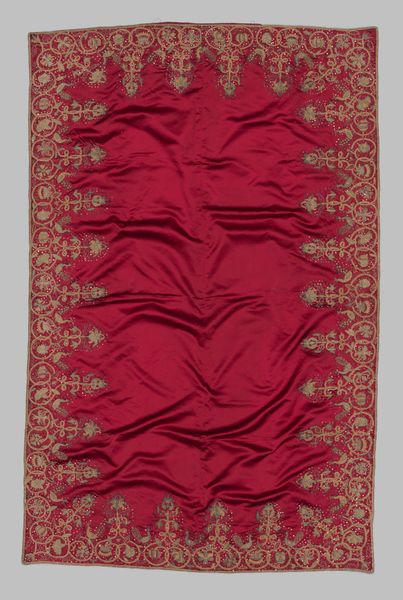
fibre-art, weaving, textile, cotton
#
african-art
#
fibre-art
#
weaving
#
textile
#
geometric pattern
#
geometric
#
line
#
cotton
Dimensions: 84 x 56 1/2 in. (213.36 x 143.51 cm)
Copyright: Public Domain
Curator: This is a man's wrapper from the Tangkhul Naga people, likely created in the 20th century. It’s part of the collection at the Minneapolis Institute of Art. What strikes you immediately about this woven textile? Editor: The powerful, almost solemn simplicity. Bold red stripes alternate with narrow bands of undyed cotton, all grounded by fringes at each end. There’s something very elemental about its geometry and its limited color palette. Curator: Yes, and the boldness certainly speaks to the garment’s function within the social and political landscape. Textiles among the Naga tribes often operate as markers of status, and these richly colored cloths were worn on important social occasions to signify power and male identity. This piece is constructed from cotton through the technique of weaving. Editor: I'm intrigued by how the red operates symbolically here. It pulsates, almost like a life force, and in many cultures, is connected with both vitality and danger. Does the cultural context assign any specific symbolic weight to that color? Curator: Yes, indeed. Among the Naga, the color red is commonly associated with courage, sacrifice, and virility. Historically, this cloth may have signified a warrior’s bravery and achievements, adding layers to its simple visual construction. Woven cloth and cotton is the medium chosen to illustrate and perpetuate ideas and histories among the Tangkhul Naga people. Editor: Thinking about it within that framework, those simple stripes might actually function as potent symbols themselves, perhaps even acting as abstracted narratives of identity and achievement. I’m also seeing a subtle repetition of a singular dot. Almost like an ancient code or language contained within each colored section. Curator: The "dot" feature acts as a signifier; and such design elements in Naga textiles often represent tribal affiliation and social standing. So the garment acts almost like a walking archive of a man’s social identity. These textiles also tell the story of trade relations and cotton farming throughout this region. Editor: It’s fascinating how something that appears so simple and self-contained actually holds so many layers of meaning. You see the warp and weft, the cultural threads woven through a single piece of cloth. It transcends its functionality and invites discussion. Curator: Absolutely, this seemingly minimalist piece allows for meaningful dialogues about material culture, masculine identity, and the agency of the Tangkhul Naga people, who persist today.
Comments
No comments
Be the first to comment and join the conversation on the ultimate creative platform.
